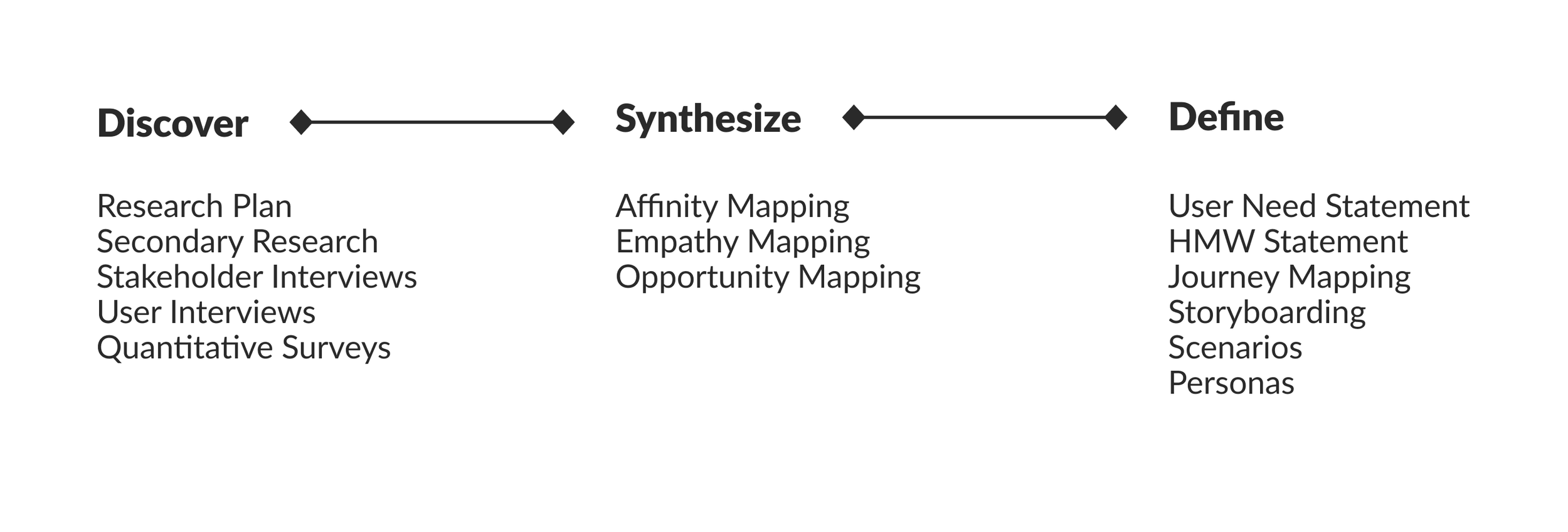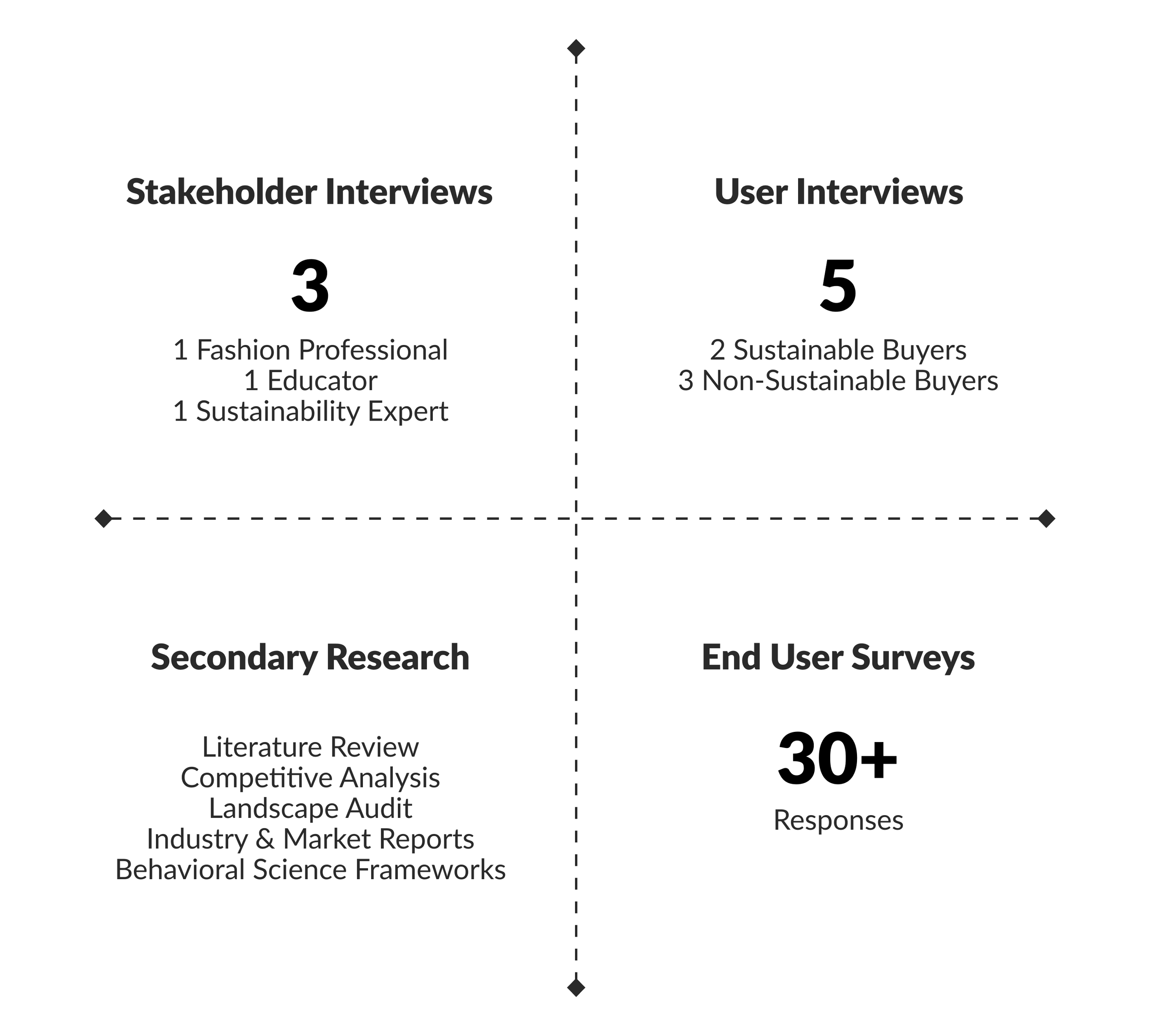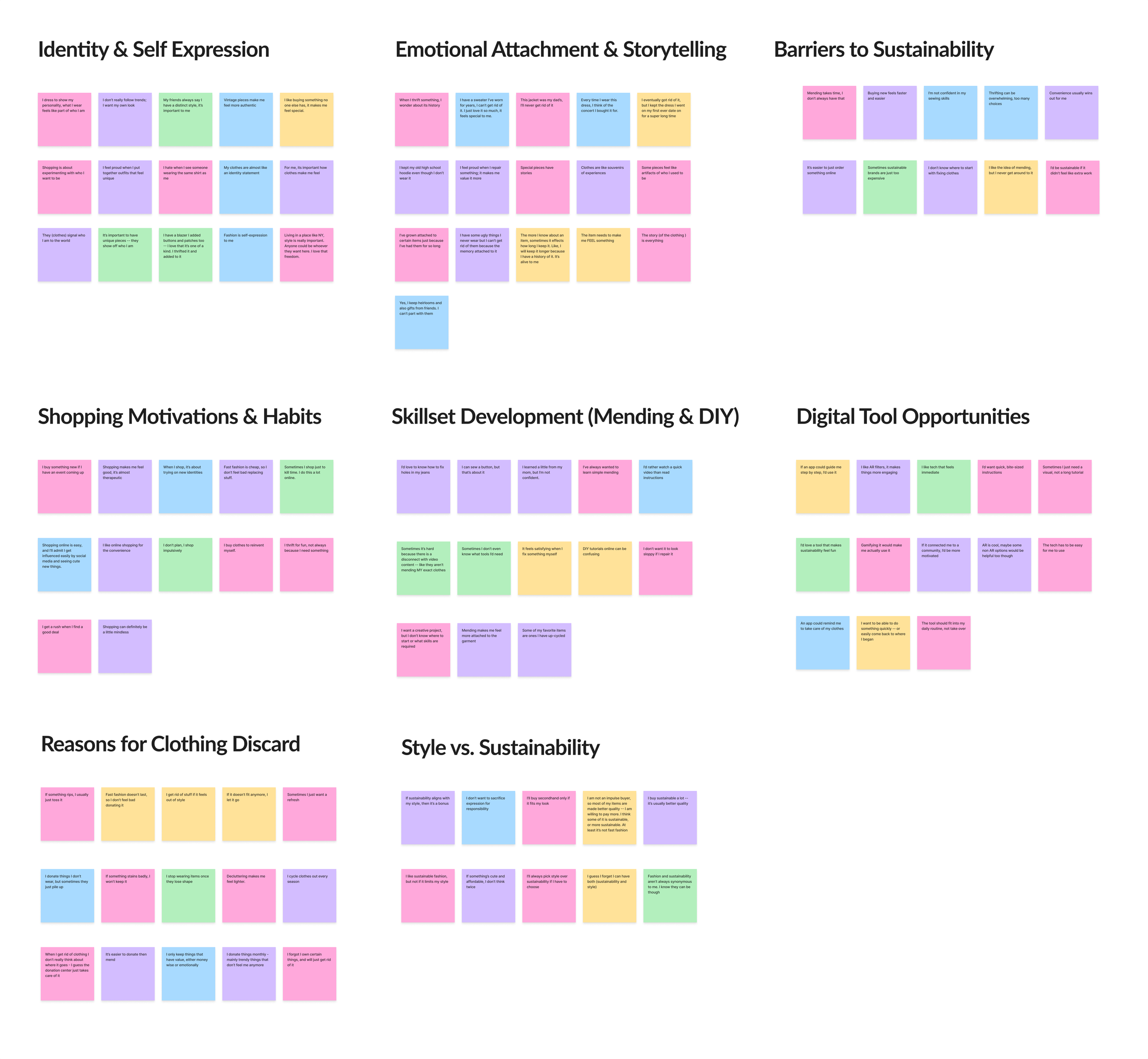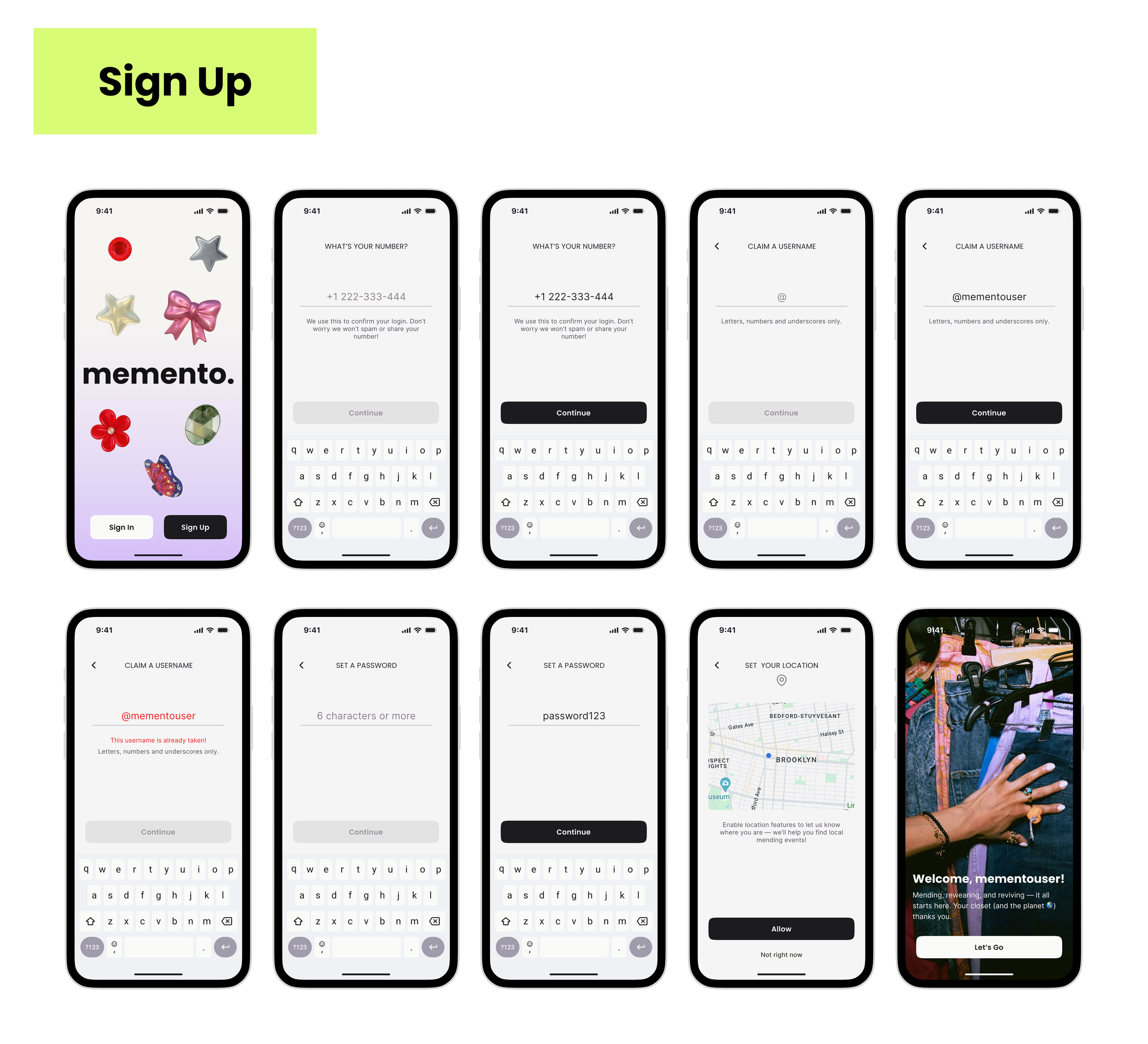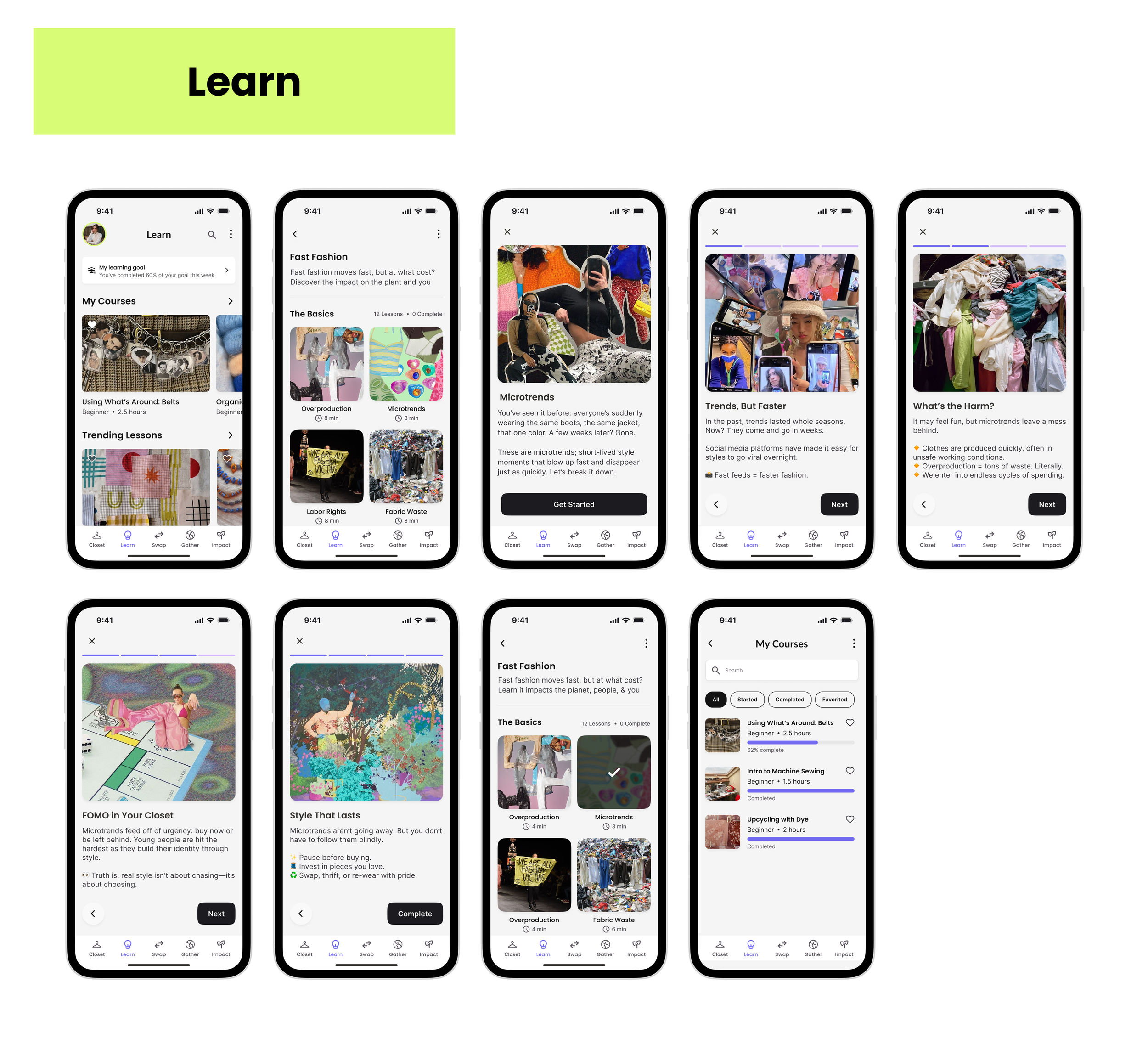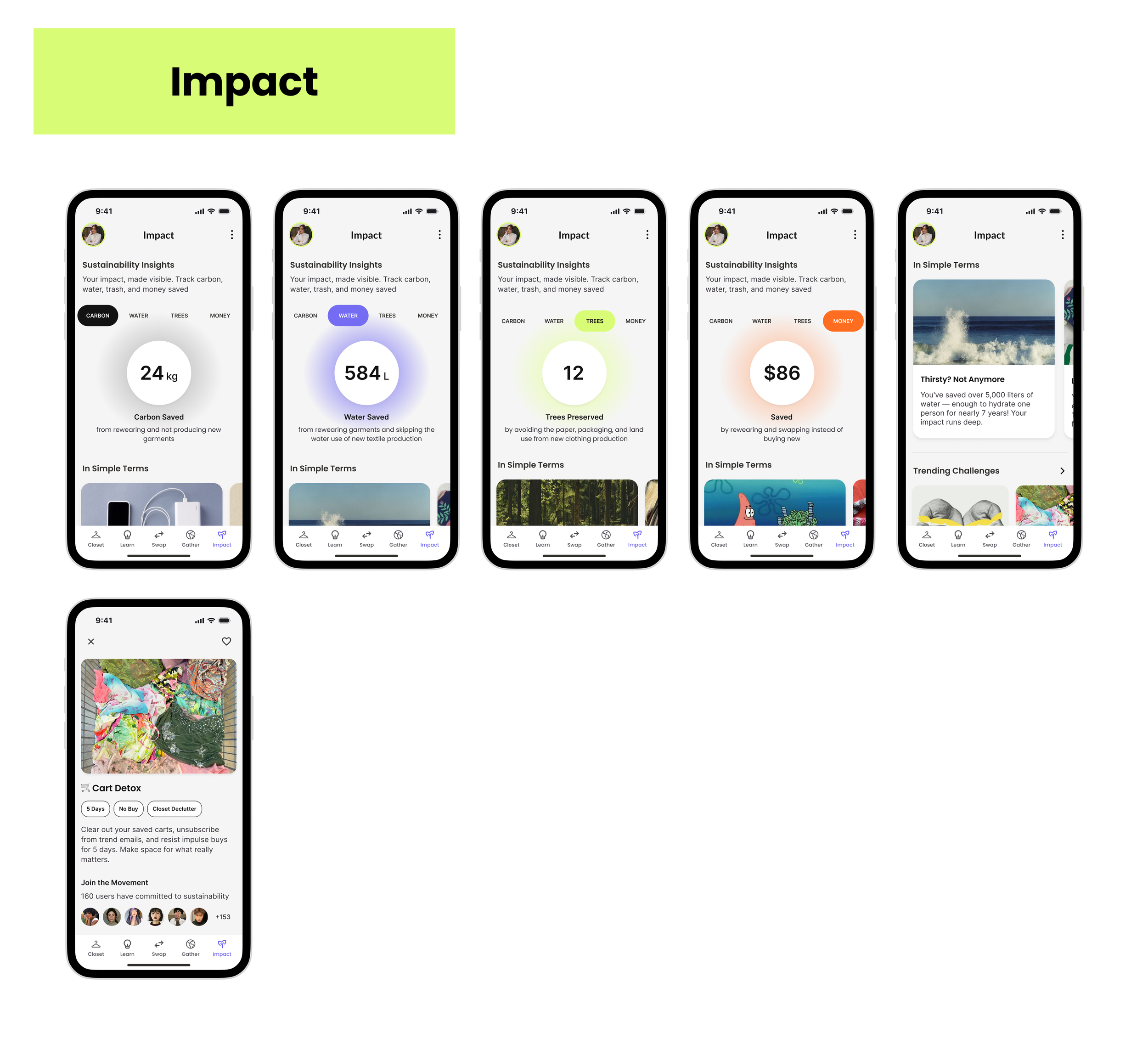Memento
a sustainability-focused fashion platform that helps people build lasting relationships with their clothes ♻️
Overview
Memento is a digital platform designed to promote emotional durability and reduce fashion waste. It combines a virtual closet and AI stylist that reimagines existing garments, a skills hub for learning mending and upcycling, and a community marketplace to swap, buy, and sell clothing. Users can explore short-form articles, quizzes, and DIY lessons, join local events, and track their positive environmental impact through personalized metrics — fostering care, creativity, and collective action around what they own.
Project Type
End-to-End Experience, User Research, Prototyping, Visual Design, Brand & Strategy, Design System
Duration
(2024-2025) 6 Months
Tools
Figma, Google Analytics, Google Surveys
How might we…
transform sustainability from a responsibility into an engaging ecosystem that helps people care for, reinvent, and keep their clothes longer?
Quick Stats
30+ participants engaged across surveys, interviews, and usability testing.
100% felt more empowered to act sustainably after using Memento.
100% reported the Impact Dashboard helped them meaningfully interpret their sustainable choices.
Memento achieved a NPS of 100, with all users saying they’d recommend it to a friend.
50% increase in intent to repair or upcycle among non-sustainable shoppers during post-test follow-ups
>90% task completion rate across all usability tests, indicating strong usability and clarity.



